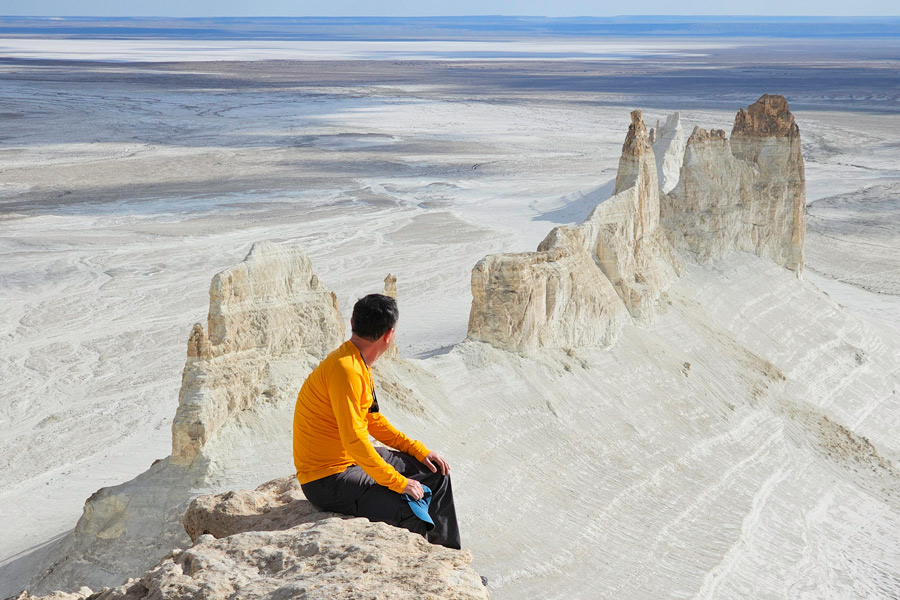
Mangystau is a land of otherworldly landscapes. Its main attractions resemble scenes from science fiction films set on distant planets. In this article, you’ll discover the 15 best places in Mangystau to include in your tour of western Kazakhstan. Each location has a unique geological story, creates a distinct atmosphere, leaves lasting impressions, and is made even more intriguing by its unusual Kazakh name. Explore our list of top 15 things to do in Mangystau - and keep in mind that in person, these places are a hundred times more impressive than they appear in photos.
Bozzhyra Valley
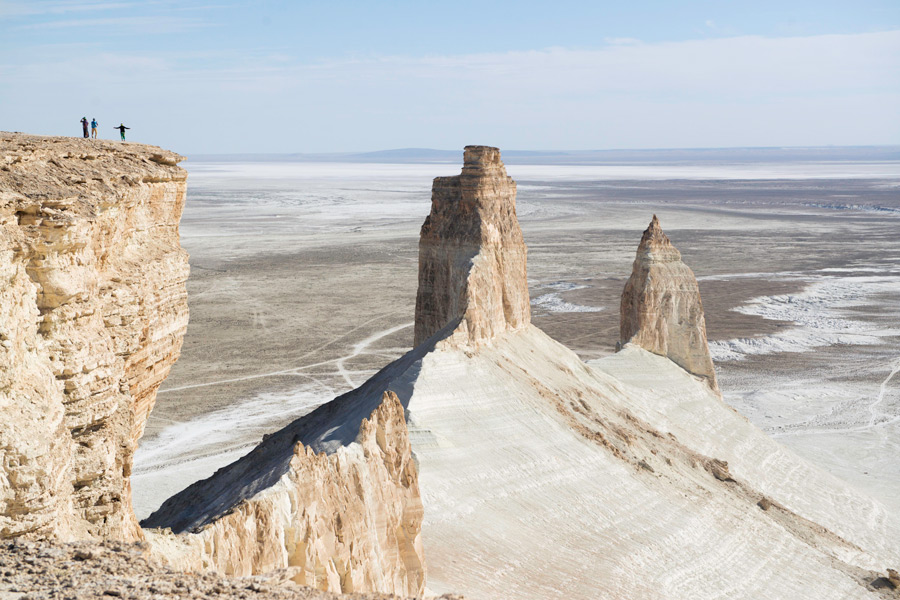
Bozzhyra is the signature landmark of Mangystau and the region’s most iconic attraction. Its dramatic viewpoints with cliffs soaring over 100 meters are simply breathtaking, and walking along the edge of the chasm is among the best things to do in Mangystau. The area offers views both from above and from the foot of its towering limestone formations. During the peak tourist season, several groups of campers pitch their tents at the base of these striking natural monuments every day. To miss Bozzhyra is like visiting Egypt without seeing the Pyramids or going to Japan without glimpsing Mount Fuji. Just be sure to save Bozzhyra for the end of your Mangystau tour - everything else will seem less impressive afterward.
Torysh – Valley of Balls
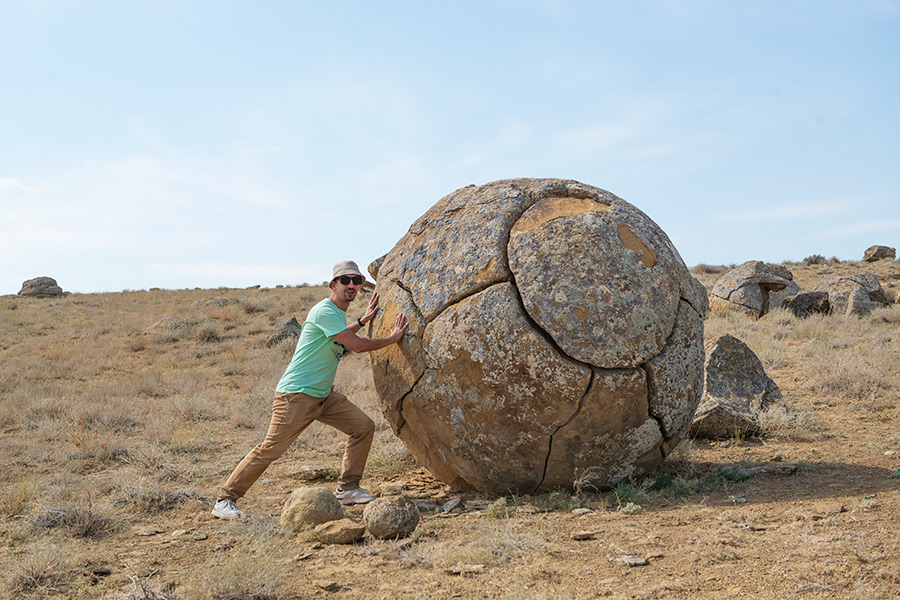
Torysh is one of the most striking and unusual places in Mangystau, home to massive stone spheres that reach up to 3 meters in diameter. They look as if they were crafted by giants for their own entertainment, but their true origin lies in a rare geological process that occurred on the seabed of the ancient Tethys Ocean. Today, similar formations exist only in a few locations worldwide - northern Russia, California, and New Zealand - yet only in Mangystau’s Torysh Valley can you see such a dense concentration. Thousands of stone spheres are scattered across the valley floor. Striking a pose like Sisyphus struggling to roll a boulder has become one of the most entertaining things to do in Mangystau.
Tuzbair Salt Marsh
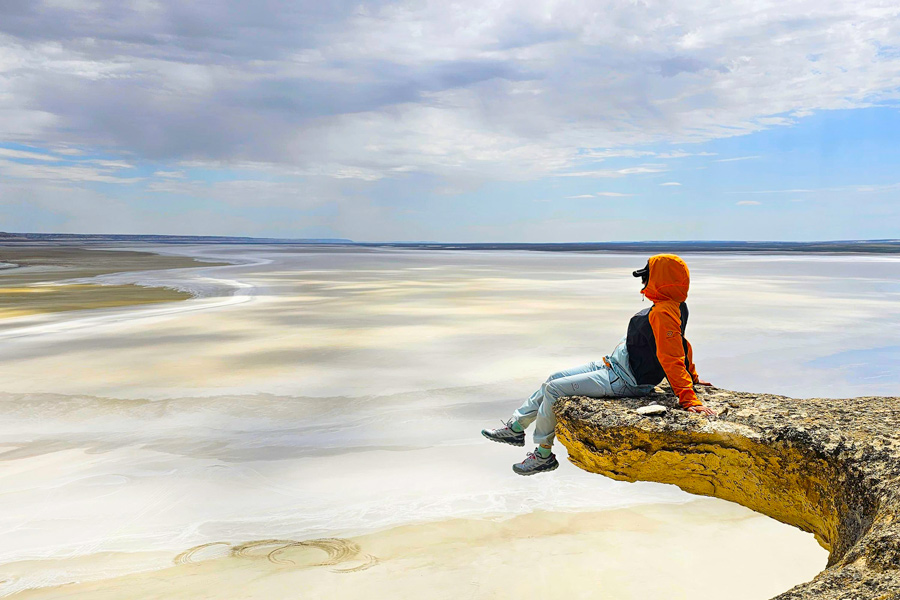
Tuzbair is one of the most dazzling natural landmarks and a popular place to visit in Mangystau. The intense whiteness of the salt surface makes sunglasses essential for anyone heading out during daylight. Here, a vast expanse of white salt meets the steep chalk cliffs of the Ustyurt Plateau. The surface of the salt marsh can be deceptive - farther from the plateau, the ground becomes soft and muddy. Those planning to walk across it are advised to go barefoot, as shoes quickly become heavy with thick, clinging mud. Near the base of the plateau walls, it’s also possible to find fossilized remains of ancient sea creatures.
The Valley of Castles – Airakty
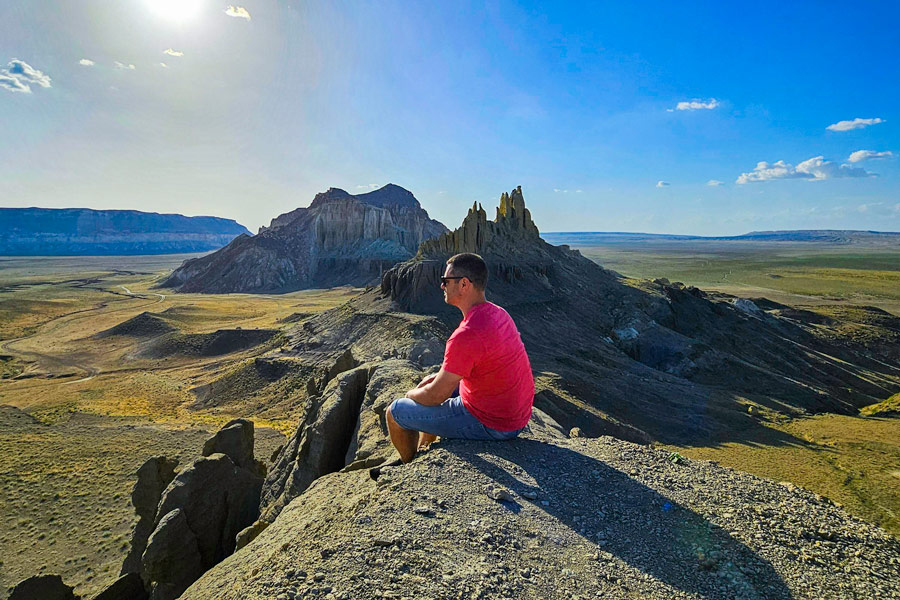
Airakty is a natural architectural wonder in Mangystau. Over millions of years, wind and water have sculpted the limestone mountains into formations that strikingly resemble grand palaces and castles. Rhythmic lines of half-columns, ledges, overhangs, and carved niches give the impression of fantastical structures. Due to the density and shape of the rock formations, this site became known as the Valley of Castles. If you're looking for what to do in Mangystau, spending a night here in a tent beneath the starry sky is one of the most memorable experiences - when moonlight casts mysterious shadows and, at dawn, you can search for a path to these seemingly unreachable stone fortresses.
Kyzylkup Tract (Tiramisu)

The Kyzylkup Tract is one of the most colorful places to explore on foot in Mangystau. Bright red and white sedimentary layers swirl together in dramatic, hill-like formations, creating a natural pattern that resembles a slice of tiramisu. The best time to admire this surreal landscape is in the early morning, as you climb to the top and count the contrasting bands of color along the way. Not far from Kyzylkup stands the well-known Mount Bokty, featured on the 1,000 tenge banknote. Don’t forget to bring one along for a photo with the real-life backdrop.
Shakpak-Ata Mosque
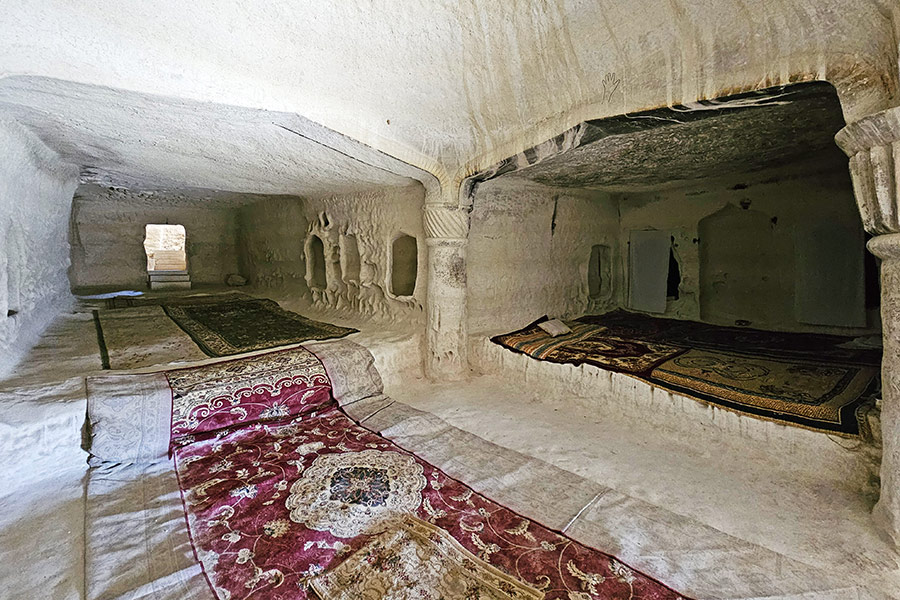
Shakpak-Ata is an extraordinary cave mosque carved into limestone rock several centuries ago. This sacred site reflects a deep spiritual heritage, blending influences from different faiths: its walls feature four columns symbolizing the elements of nature - a reference to Zoroastrianism - while the cross-shaped prayer hall evokes Christian architecture. In earlier times, Sufi ritual dances were held here, and pilgrims came seeking healing for both body and soul. Today, the Shakpak-Ata Mosque continues to draw the faithful, while its distinctive design and legendary past make it a compelling stop for travelers looking for meaningful things to do in Mangystau.
Mount Sherkala
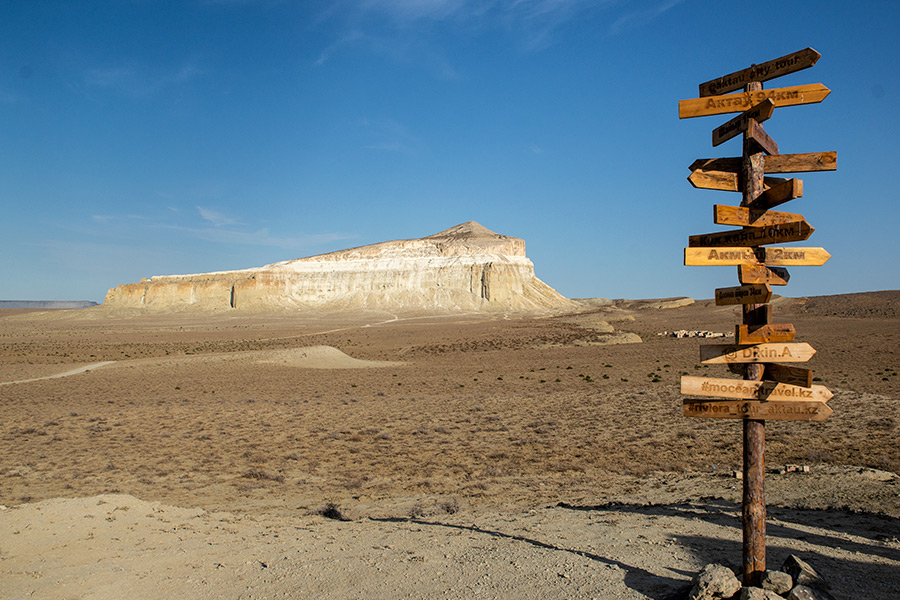
Mount Sherkala sparks different associations in those who see it on the horizon: some imagine a lion, others a Kazakh yurt, an upturned bowl, or even a human face - all depending on the viewing angle. As you draw closer, the mountain often evokes a sense of mystery that is difficult to explain. Surrounded by legend and regarded as a sacred site, Sherkala holds deep cultural significance. Today, it stands as one of Mangystau’s most iconic landmarks and a favorite subject for photographs - especially selfies.
Ybykty Canyon
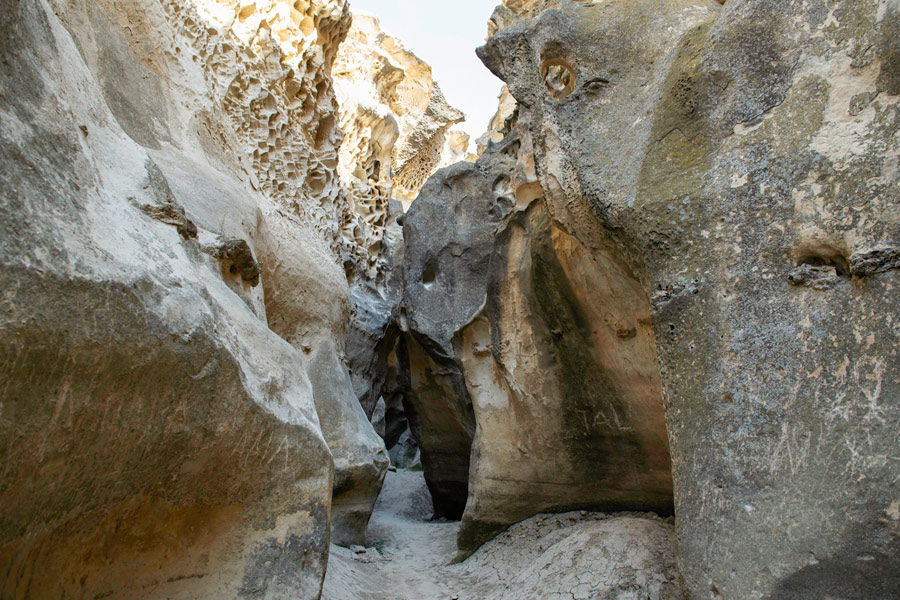
Ybykty Canyon is one of the most extraordinary natural wonders in Mangystau and is definitely worth seeing. This narrow, winding gorge, about 10 meters deep, is lined with walls featuring unusual porous textures whose origins remain scientifically unexplained. The limestone formations resemble honeycombs or aerated chocolate, and in some sections, the overhanging cliffs nearly meet, allowing sunlight to reach the canyon floor only at midday. There is no other site quite like it in the world, its closest resemblance is the renowned Antelope Canyon in the United States.
Zhygylgan Fault
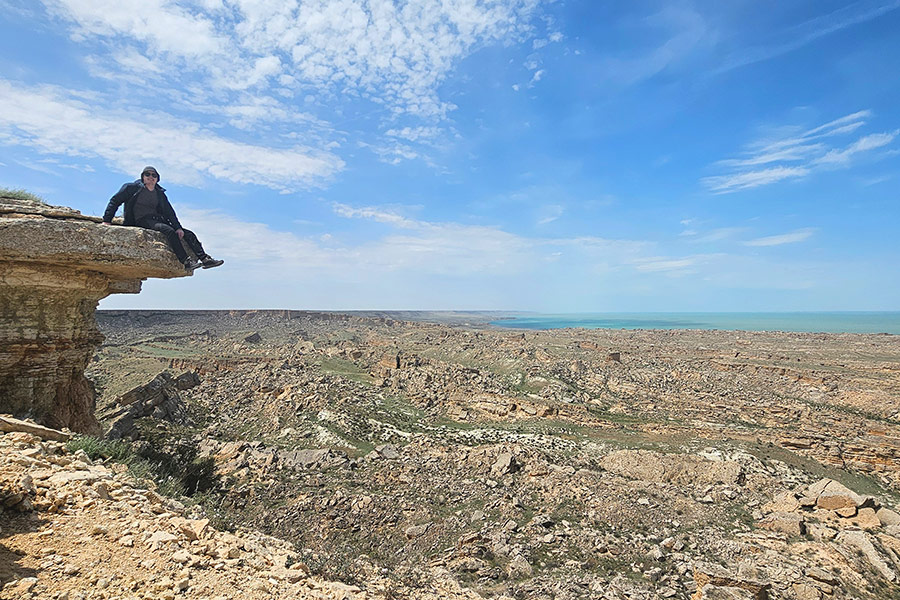
Zhygylgan is one of the largest natural attractions in Mangystau, spanning an area of 9 square kilometers. Its Kazakh name means “fallen land”, which perfectly captures the nature of this vast sinkhole that collapsed from a height of 50 to 100 meters. You can take in the view from the steep cliffs above or hike down into the formation itself - an adventure well worth adding to your list of things to do in Mangystau. At the bottom, you’ll find massive rock fragments scattered across the terrain and may even spot fossilized traces of animals that roamed the area millions of years ago, long before the collapse occurred.
Kok-Kala Tract

At first glance, Kok-Kala looks like a typical gorge shaped by millions of years of wind and water erosion. But scientific research has revealed that the exposed rock here was once the Earth’s surface some 140 million years ago, during the Jurassic period. While you won’t uncover dinosaur bones or teeth, there’s a good chance of spotting fossilized impressions of ancient plants embedded in the stone. For paleontology enthusiasts, exploring Kok-Kala is one of the more unexpected and rewarding things to do in Mangystau.
Karynzharyk Depression
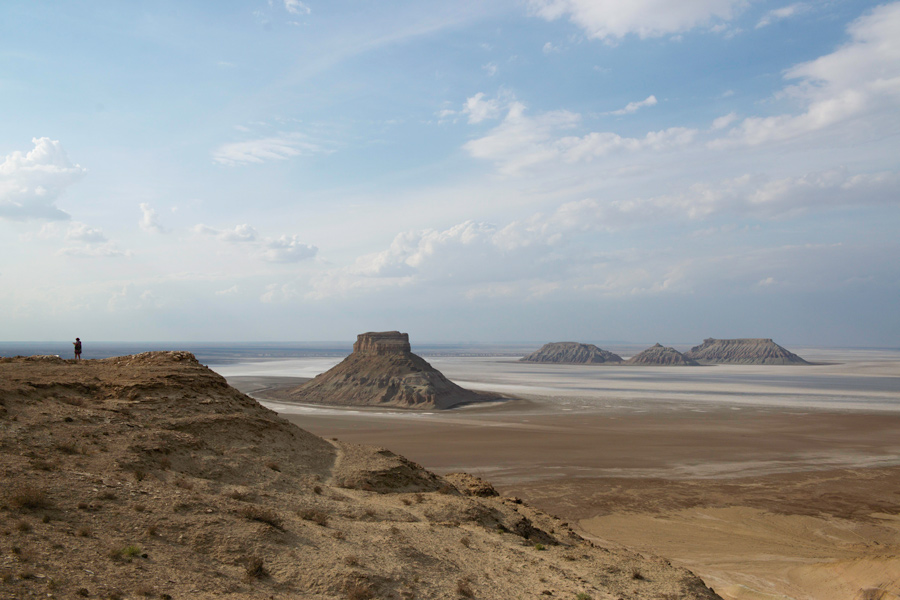
The Karynzharyk Depression is the most remote attraction in Mangystau. Only the most intrepid travelers venture this far, and those who do are rewarded with vast horizons, striking mountains rising from a white salt plain, and a rare sense of connection with untouched ancient nature. The likelihood of encountering another tourist group is extremely low, allowing for uninterrupted reflection in a landscape where time seems to stand still. On moonless nights, the stars stretch endlessly above - stargazing here is one of the most unforgettable things to do in Mangystau.
Senek Sands
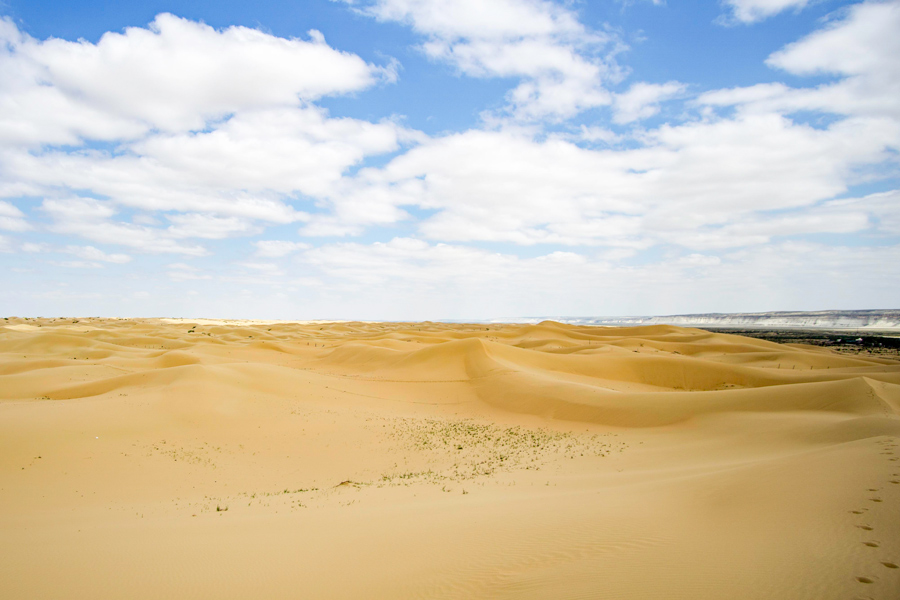
Senek Sands offers a rare and surprising landscape in Mangystau, a region where 90% of the territory is dry steppe and the rest consists of limestone formations. The dunes near the village of Senek, also known as the Tuysu Sands, resemble a miniature slice of the Sahara or Arabian desert. A walk through these golden hills is a refreshing change of pace, and climbing to the top of a dune to watch the sunset is a perfect way to close out a day of traveling in Mangystau.
Saura Gorge
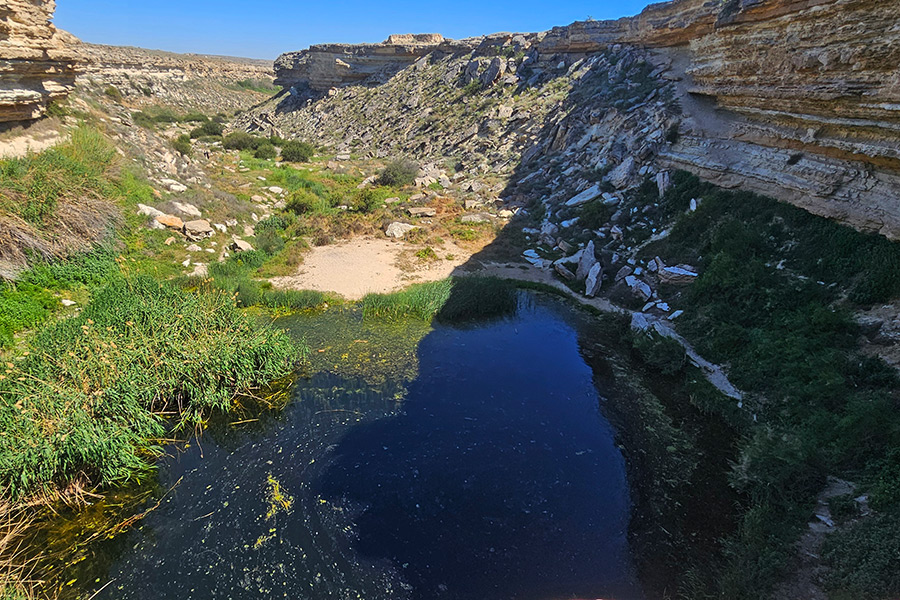
A scenic gorge with a small freshwater lake at its base, Saura is often called Turtle Lake due to its population of marsh turtles. The 5-meter-deep pool was formed by groundwater seepage and is especially picturesque in spring, when the surrounding slopes turn green. It’s a true oasis in the heart of the Kazakh steppe.
Karadiirmen Gorge
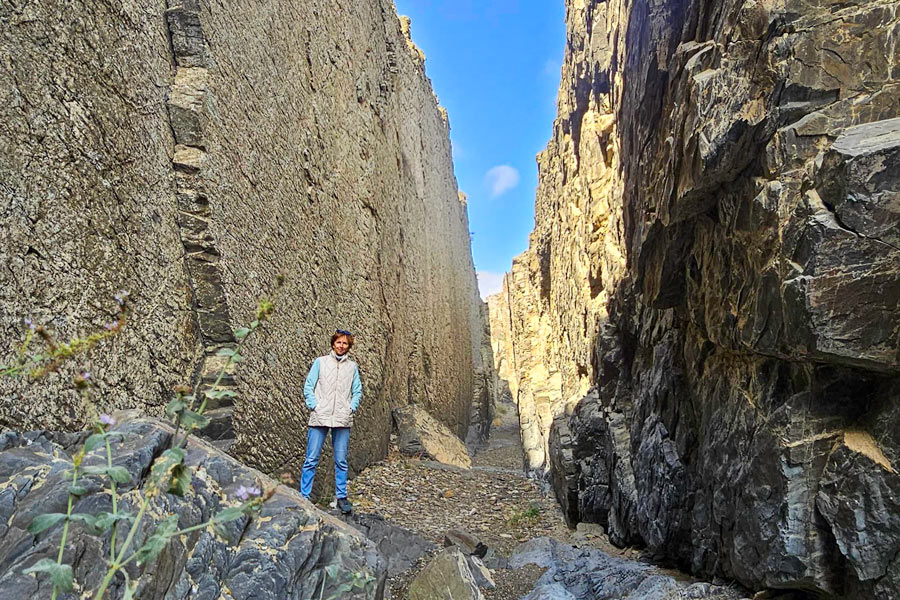
This striking geological site stands out in a region known for its pale limestone and red cliffs. Here, black and gray tones dominate the landscape, and sheer stone formations replace the usual sedimentary layers. Even its name, which translates as “black millstones,” reflects the stark difference in terrain.
Three Underground Mosques: Sultan-Epe, Karaman-Ata, and Beket-Ata
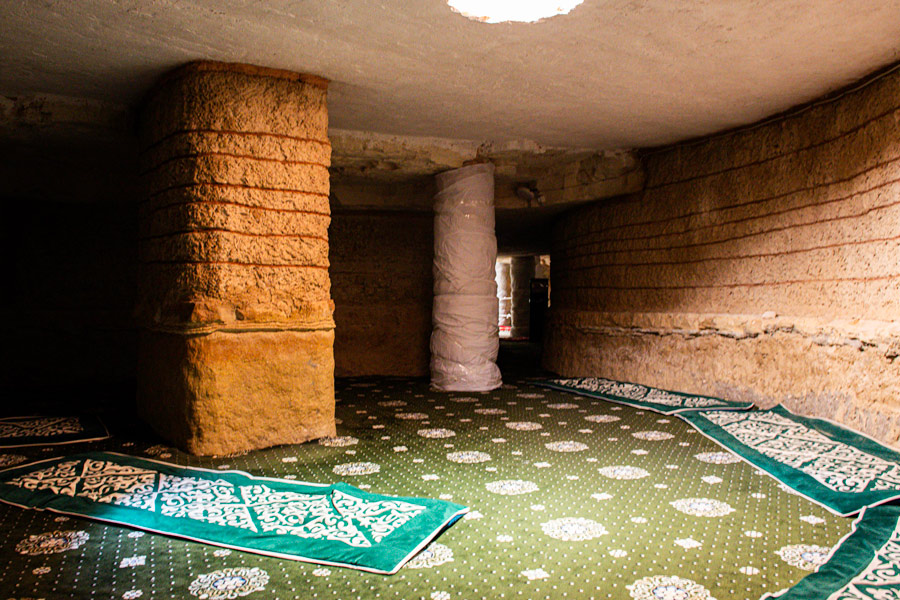
In Mangystau’s arid climate, where natural shade is rare, early builders carved mosques directly into layers of limestone. Some were expanded from existing caves, with added vault supports and dim, tranquil prayer spaces. These sacred sites remain peaceful, wind-protected places for worship and reflection. They are also conveniently located near other major landmarks: the Sultan-Epe Mosque is situated between the Zhygylgan Fault and the Shakpak-Ata Mosque; Karaman-Ata lies along the road to Ybykty Canyon; and Beket-Ata is just 10 kilometers from the renowned Bozzhyra Valley.

